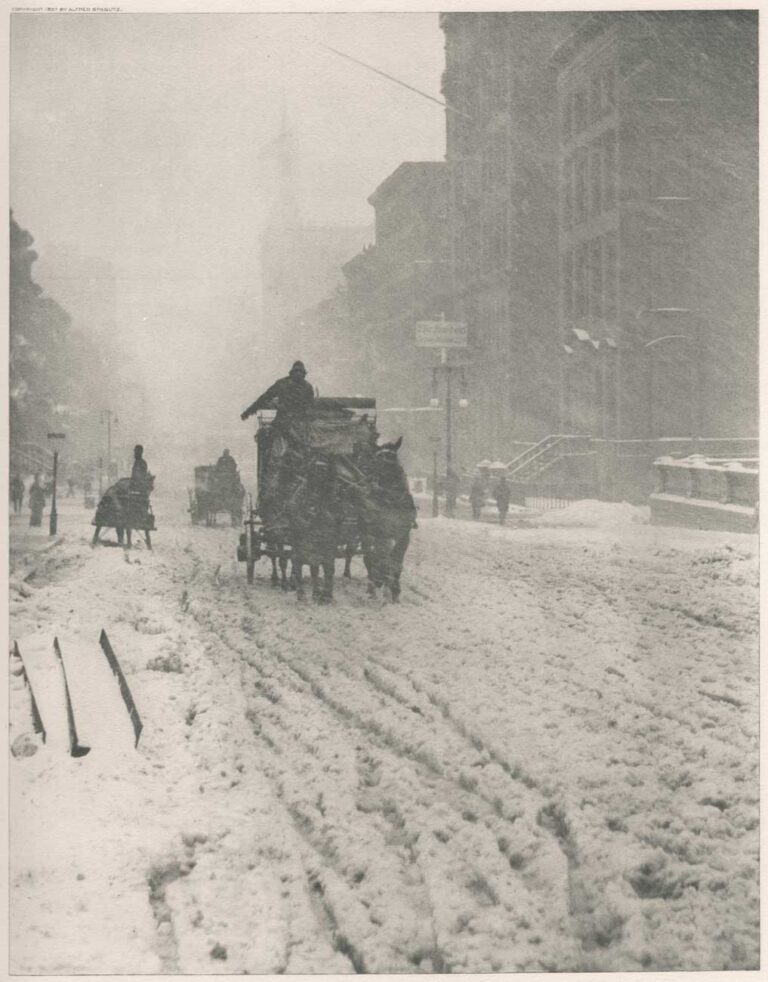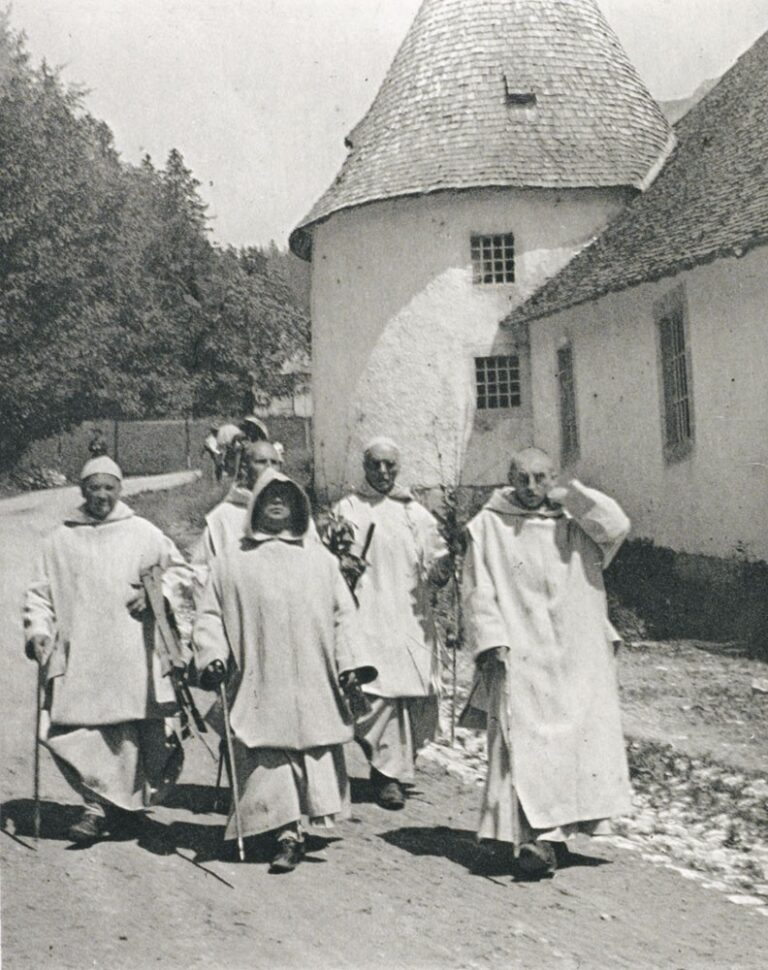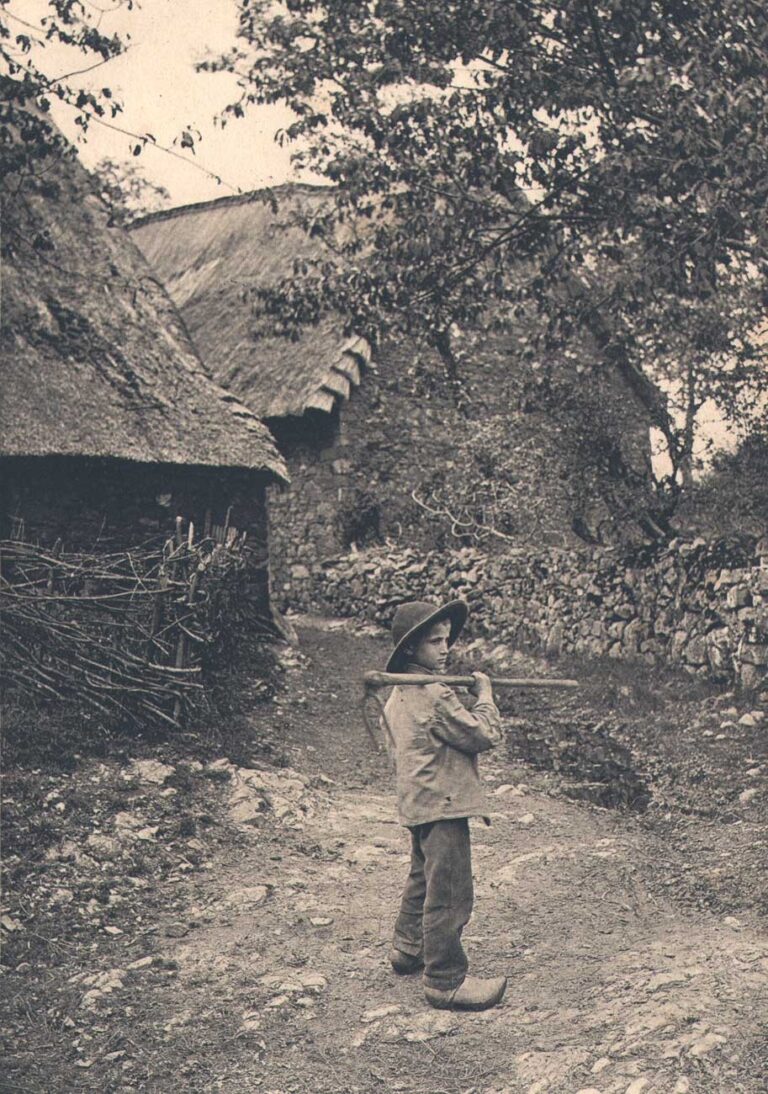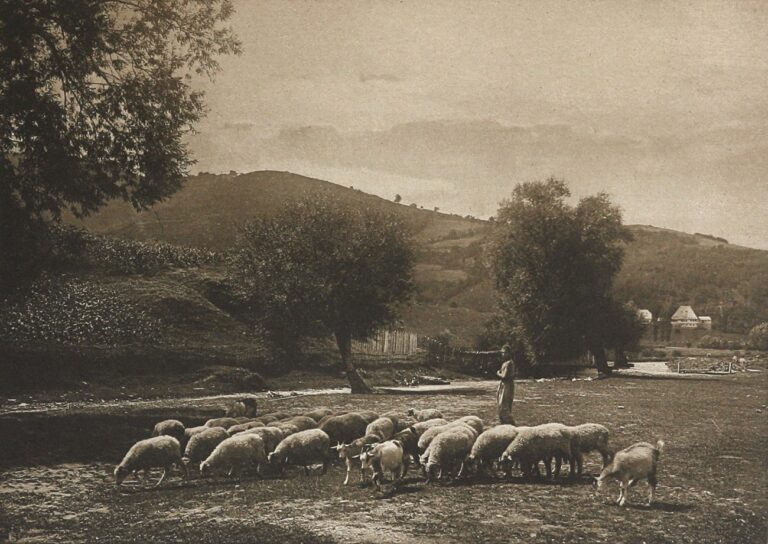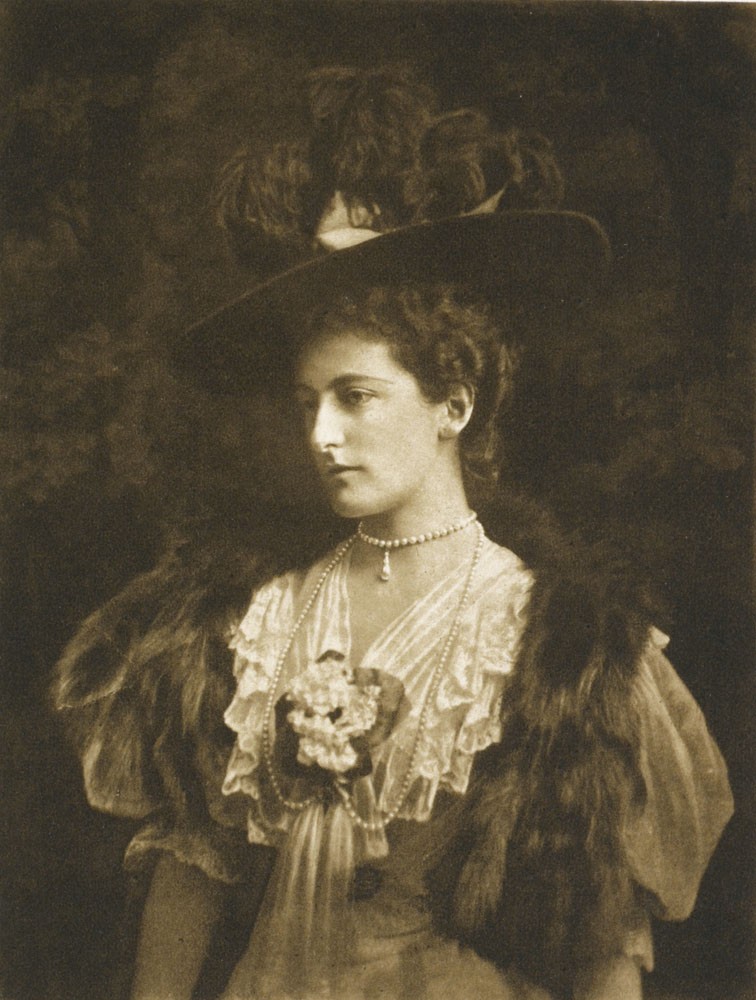
Portrait Studien
This plate has the distinction of being the smallest reproduced photogravure of all 356 in Die Kunst in der Photographie:1897-1908.
William Crooke
William Crooke was one of Scotland’s most prominent professional portrait photographers, establishing a studio in Edinburgh in 1883. An early account of his studio at 103 Princes street and personal moniker as “The Boss of the Walk” (the Walk being Princes Street in this city) was described by a correspondent for the Practical Photographer in 1892:
“Taking a stroll west the other day we observed a magnificent carved doorway being erected in connection with Mr. Crooke’s studio. It has a glass domed top and glass panels and the name ‘Crooke’ in embossed brass on the lower panel. The whole affair is most artistic in taste and very pleasing to the eye; as usual, the work exhibited is tip top.” 1.
Later, after 28 years in business, a 1911 account appeared: “The studio is situated in Princes Street. From the windows of the Reception Room, a beautiful view is obtained of Edinburgh Castle, that “‘dream of masonry and living rock’ and across the Princes Street Gardens to where the smoky homes of the Old Town look down on the magnificent thoroughfare of the Northern capital.
The studios leading off the reception rooms are spacious and convenient, and contain many original features that owe their origin to Mr. Crooke’s experience and artistic taste.
On the walls we see prints that have done their part in maintaining the Crooke fame. There is a majesty about all the pictures from these studios that is so prevailing that it might well be termed the dominant note in the scheme of Crooke’s harmony.
Even childhood, when photographed by Mr. Crooke, assumes an aristocratic mien; one can hardly imagine him photographing a slum child and retaining the slum atmosphere.” 2.
Crooke was almost 80 when he died, having been born in Ireland in 1848. He died on August 23rd, 1928. From his obituary printed that year: “His portraiture exhibited a characteristic conservatism. He would not employ any process that would not stand the test of time, and thus used platinotype and carbon only, printing by contact from negatives taken direct upon large plates. His awards for portraiture gained at important exhibitions amounted, it is believed, to a greater number than can be credited to any other photographer of his time.” 3.
1. All sources: website: EdinPhoto: The History of Photography in Edinburgh by Peter Stubbs: from: The Practical Photographer, April 1892, p. 105
2. The British Journal of Photography: April 14, 1911
3. Crooke obituary: The British Journal of Photography: August 31, 1928: p. 532
